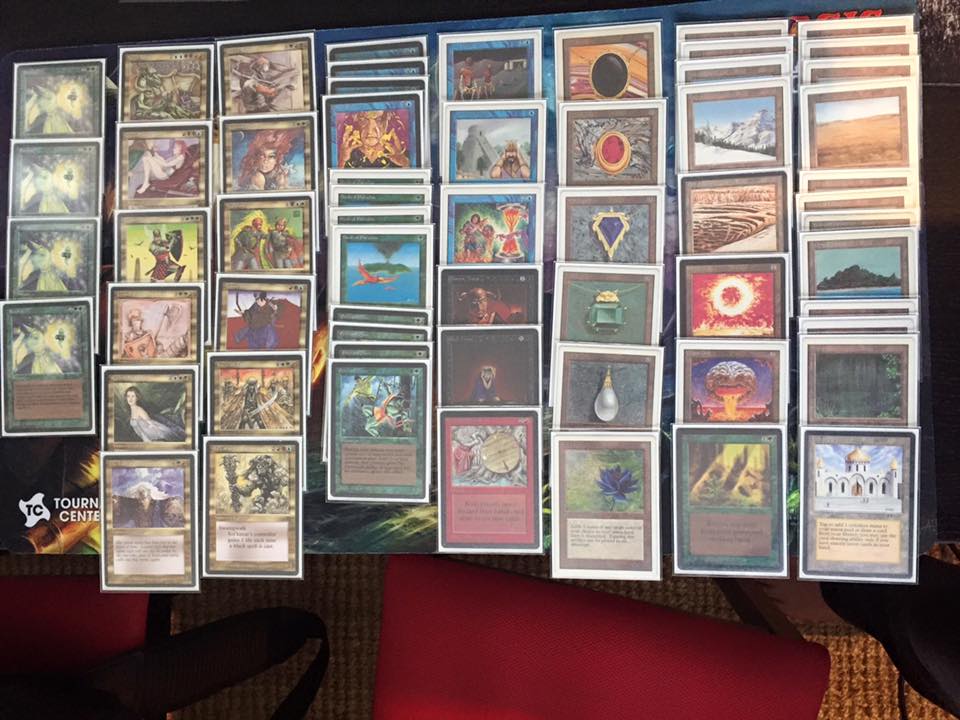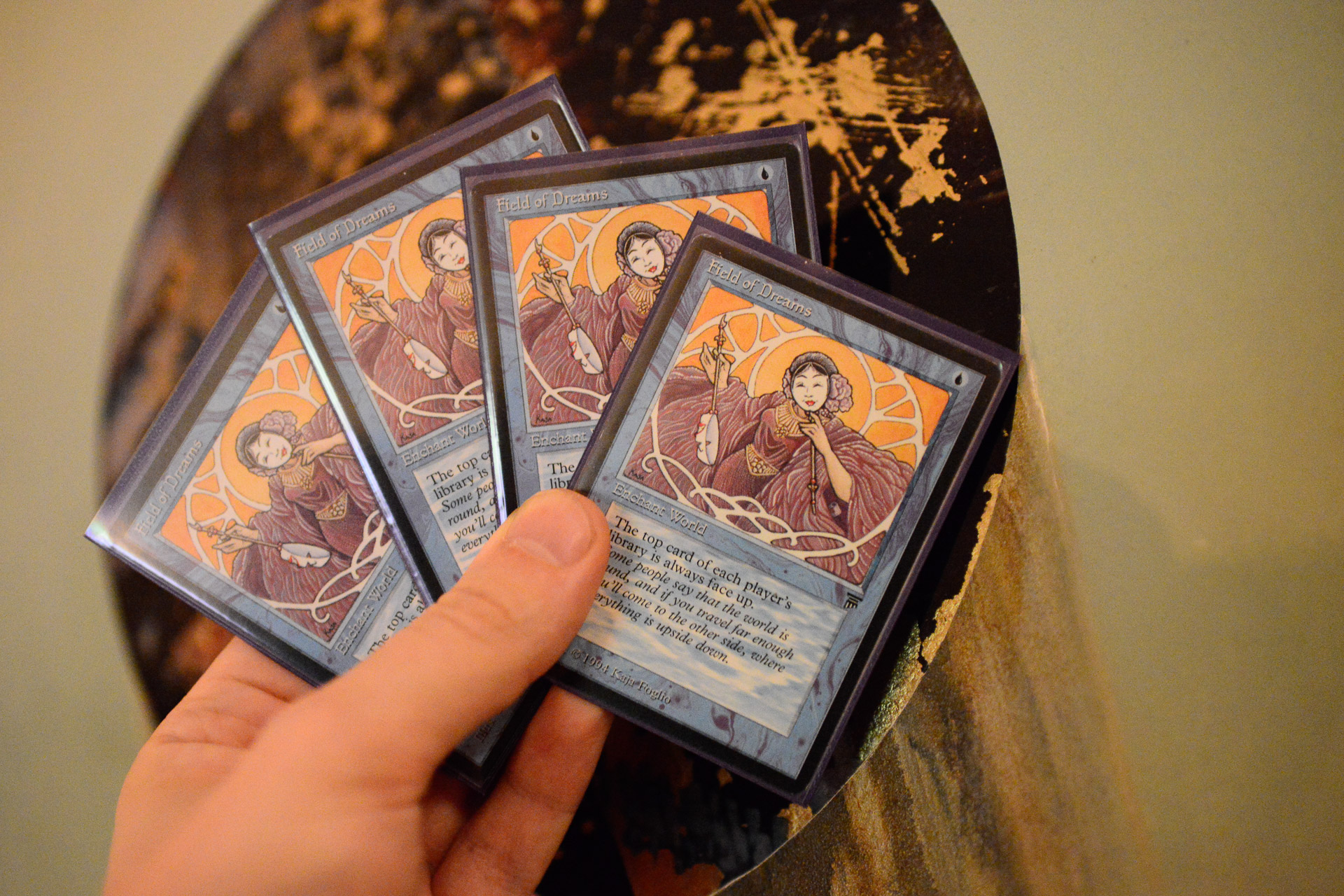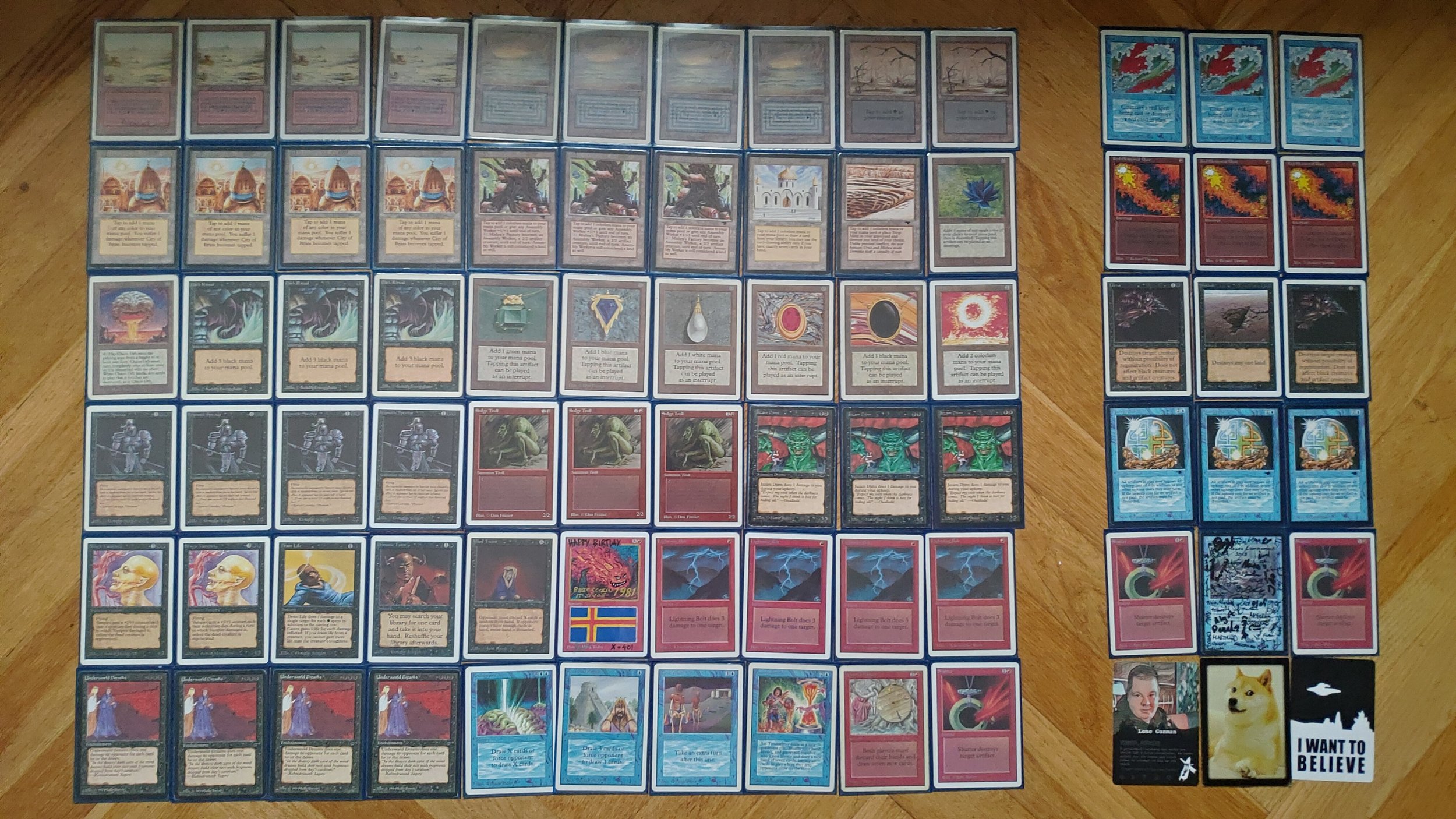Deck by Gajol
Reanimating fatties is a strategy as old as the game itself; and if something is as old as the game itself of course you can build a deck based on it in 93/94. The game plan is the same as with any other reanimation deck in any other format, you just use different cards. That means that you first of all need a discard outlet to put a creature in your graveyard. Then you also need some cards that let you put creatures from your graveyard onto the battlefield.
The cards that you have at your disposal for the second part of the combo are Animate Dead, Resurrection, All Hallows Eve and to a lesser extent Hell’s Caretaker and Reincarnation. To bin your fatties, you can use cards like Jalum Tome, Bazaar of Baghdad and Mind Bomb. Just mix and match as you see fit to make up you deck. When it comes to the big monsters there are some problems as most of the big creatures in this format have horrible downsides. But some examples of creatures that you can use are Nicol Bolas, Chromium and Shivan Dragon.
Another reanimation target is the humongous Colossus of Sardia, but then you also need a plan for how to untap it. A couple of cool and interesting ideas that have been used in the past is getting another one with Transmute Artifact or sacrificing the monster with the card Sacrifice to end the opponent with a big Fireball, or to cast another Colossus of Sardia.






























